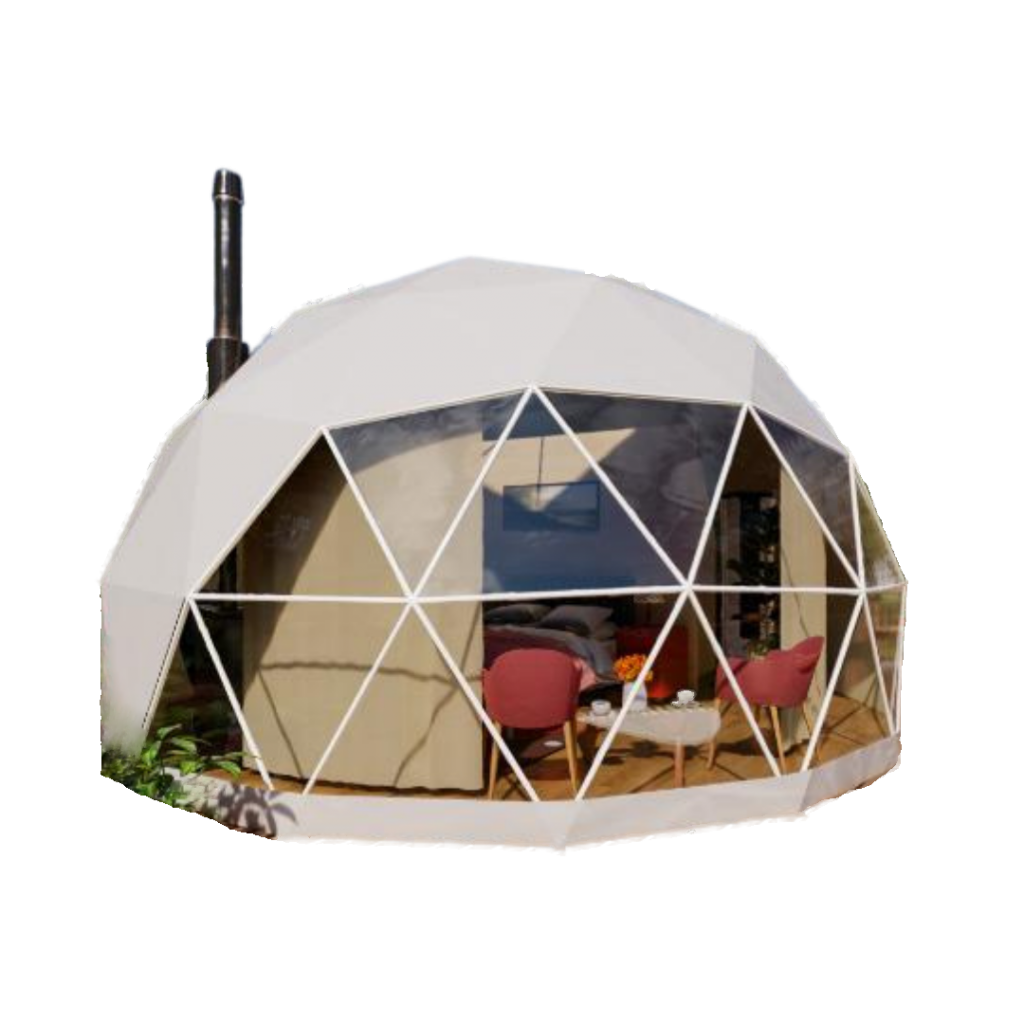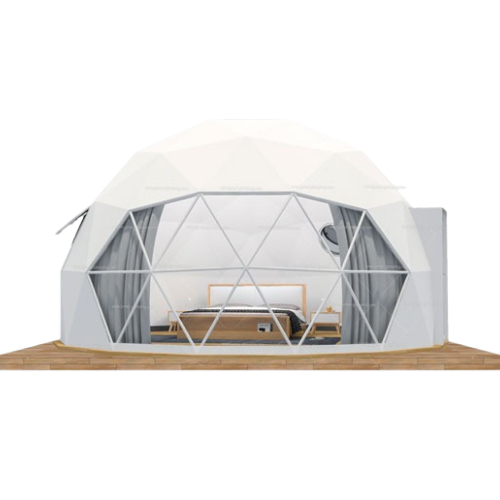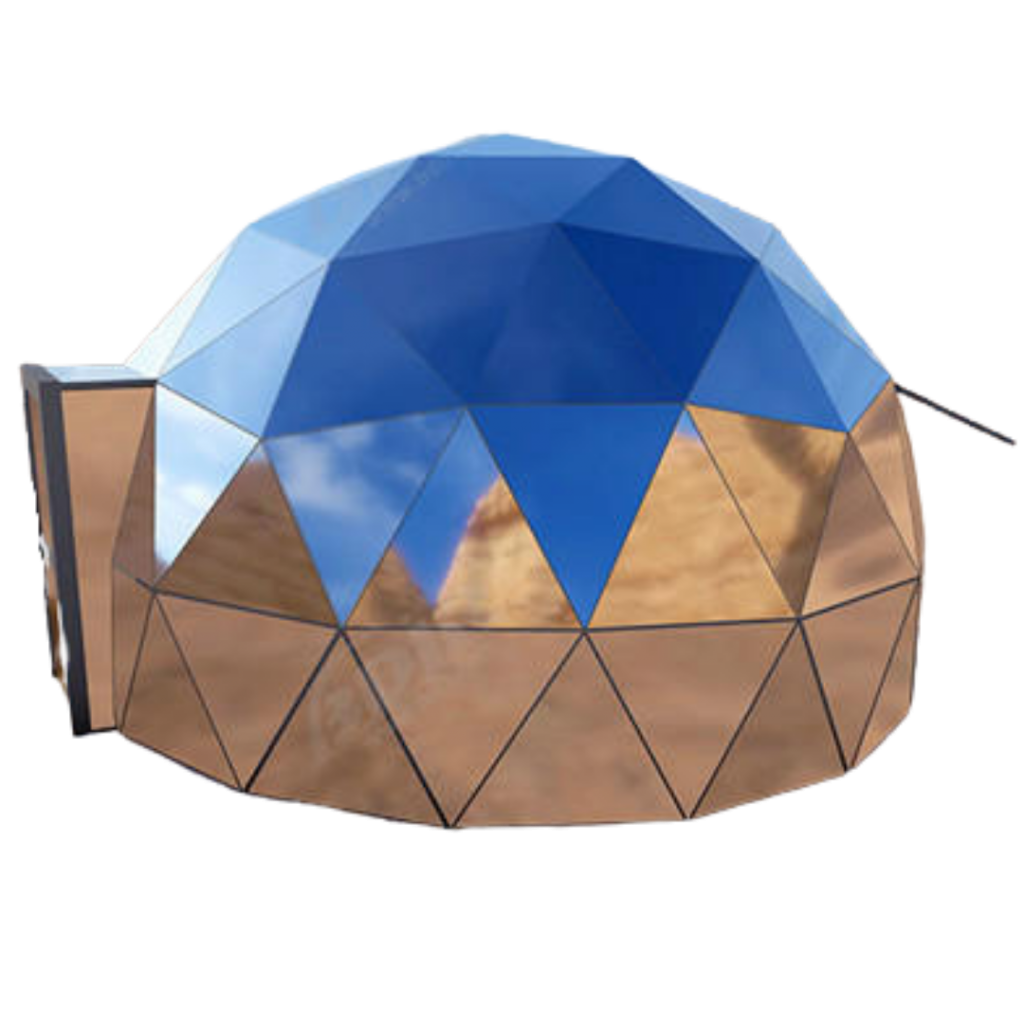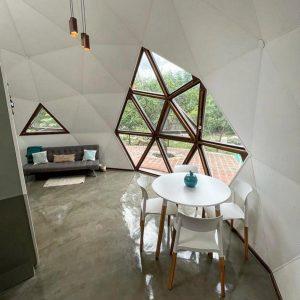A domefrom Latin domus which means "house", is an architectural structure that resembles the upper half of a sphere.. Its circular and robust design has given it a special resistance against the elements, being one of the oldest and most durable forms in world architecture.
Domes have been used throughout history in various cultures. and for multiple purposes. From monumental cathedrals and observatories to modern ecological housing, its versatility is widely recognized.
The main reason for its popularity lies in the efficiency of its design.The dome offers the maximum space with the minimum amount of material, and its shape distributes weight and stress evenly, giving it superior stability compared to traditional structures.
Home Domes
With the steady growth of sustainability and innovative design in the architectural world, domes have emerged as a unique and attractive residential option. These spherical structures offer not only an aesthetically pleasing appearance, but also a number of practical benefits that are driving their adoption in the residential arena. Let's explore them further.
What type of dome is best?
The choice of the "best" dome depends largely on individual needs and preferences. There are several types of residential domes:
-
- Duna geodesic dome: These domes are perhaps the most popular. They are characterized by their structure of interlocking triangles that distribute weight evenly. They are particularly resistant to the elements and have remarkable energy efficiency.
-
- Atlas Dome: Combines luxury and durability with an aluminum and tempered glass dome, adaptable to different climates. Customizable in size and color.
-
- Pyro Dome: A glass pyramid, outstanding in design and durability. Ideal for vacation homes, offices and meditation spaces.
The final choice will depend on factors such as climate, budget and aesthetic preferences.
Home dome price, How much does a dome cost?
The price of a residential dome can vary widely depending on size, materials, design and location.. On average, a geodesic dome can cost between €6,000 to €45,000, although this range can be higher for custom or luxury designs. Atlas domes and glass pyramids can have similar prices, but it is always advisable to get specific quotes by contacting our professionals.
How many years does a dome last?
The durability of a residential dome is strongly linked to the materials used and the maintenance provided. In general, a well-built and maintained dome can last for decades.. For example, a quality geodesic dome can easily exceed 50 years with proper care. Atlas domes, due to their robust aluminum and tempered glass construction, they can have an even longer service life.
What are the advantages of living in a dome?
Living in a dome has many advantages:
-
- Energy efficiency: Its spherical design ensures uniform heat distribution, reducing heating and cooling costs.
-
- Resistance: Domes are known for their ability to withstand adverse weather conditions, from high winds to earthquakes.
-
- Maximized space: The column-free interior design allows for a free and flexible space distribution.
-
- Reduced environmental impact: Due to their efficiency and compact design, domes typically require less materials and energy for construction and maintenance.
Living in a dome is, without a doubt, a unique experience that combines the best of innovative design with functionality and sustainability.
What types of domes are there?
Domes are architectural structures that have been gaining popularity due to their innovative design and functionality. In our catalog, we offer different types of domes, each designed to suit different needs and styles:
-
- Duna Dome: This dome stands out for its white galvanized steel structure. The cover is made of high tenacity woven geotextile with a PVC waterproofing treatment, ensuring durability and resistance.
-
- Terra Dome: Similar to the Domo Duna in terms of its galvanized steel structure, the Domo Terra adds a distinctive touch with its polyester & PVC cover combined with tempered glass, providing an attractive and modern aesthetic.
-
- Atlas Dome: A symbol of luxury and durability. With its aluminum structure and tempered glass cover, the Atlas Dome is ideal for those seeking contemporary aesthetics and unparalleled robustness.
-
- Piro Domo: This dome takes the shape of a glass pyramid. Made of aluminum and tempered glass, it offers a unique beauty and becomes the focal point of any space.
Do you want to buy a Geodesic Dome?
Discover the variety and quality of our geodesic domes, designed to meet your needs and exceed your expectations. Fill out our contact form and our team will assist you in every step towards the acquisition of your own dome.
Origin of the domes Who created them?
The concept of domes has existed since ancient times, with evidence of domed structures in various civilizations. However, the modern design of geodesic domes was popularized by the architect and visionary Buckminster Fuller in the 20th century. His vision revolutionized architecture and led to the creation and adaptation of domes in multiple applications. In the case of our catalog, each dome has been designed with a combination of tradition and innovation, reflecting years of experience and passion in the field.
Domes in Geology: What are they?
Within the field of geology, the term "dome" acquires a particular meaning. A geological dome refers to a rock formation that has been pushed upward to form a convex elevation.. This phenomenon can be the result of tectonic processes, such as the intrusion of magma that pushes the upper rocks, or through the displacement and folding of rock layers.
These geological structures are often found in regions with significant tectonic activity and can vary greatly in size, from small formations to enormous elevations covering hundreds of square kilometers. Geological domes are of special interest to geologists as they often contain valuable mineral and fossil resources that can shed light on the geological history of a region.
Notable examples of geological domes include the Richat Dome in Mauritania, often referred to as the "Eye of the Sahara," and the Wichita Dome in OklahomaUnited States.


With more than 15 years in the construction world, I am specialized in materials, works and innovative structures such as domes and glass pyramids. In domodomos.com, I share my passion for building dreams and my experience acquired in the family business.
